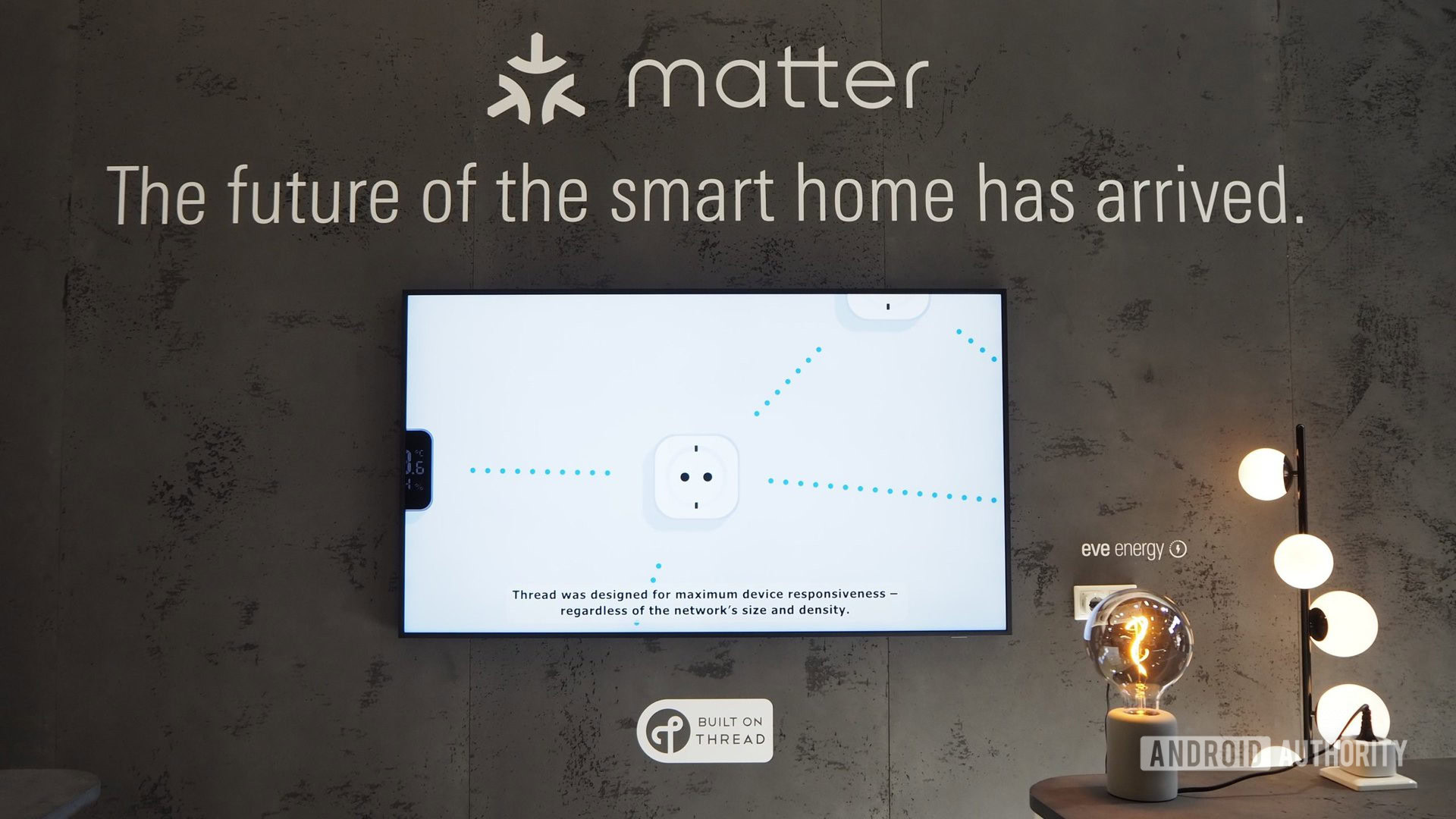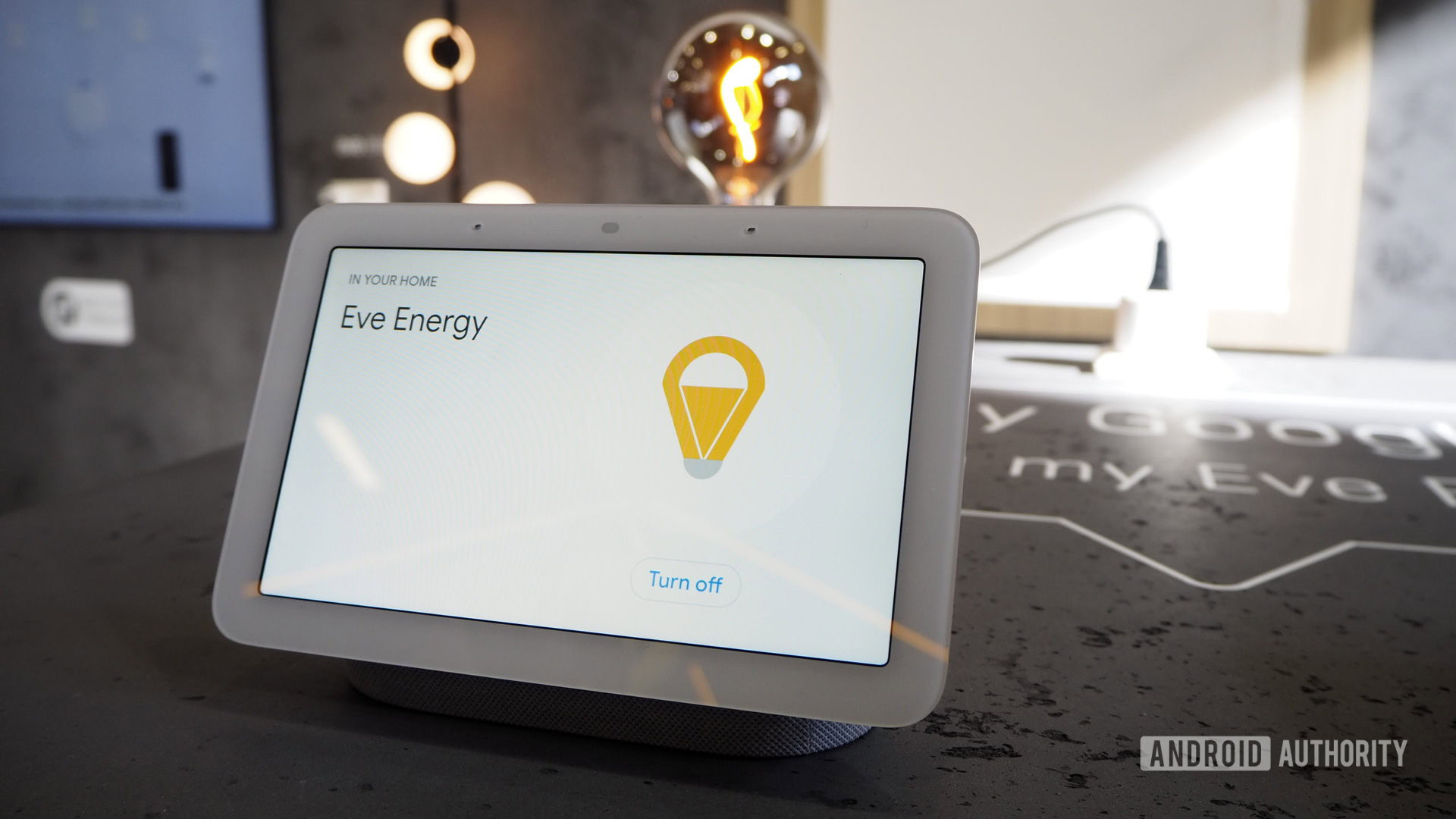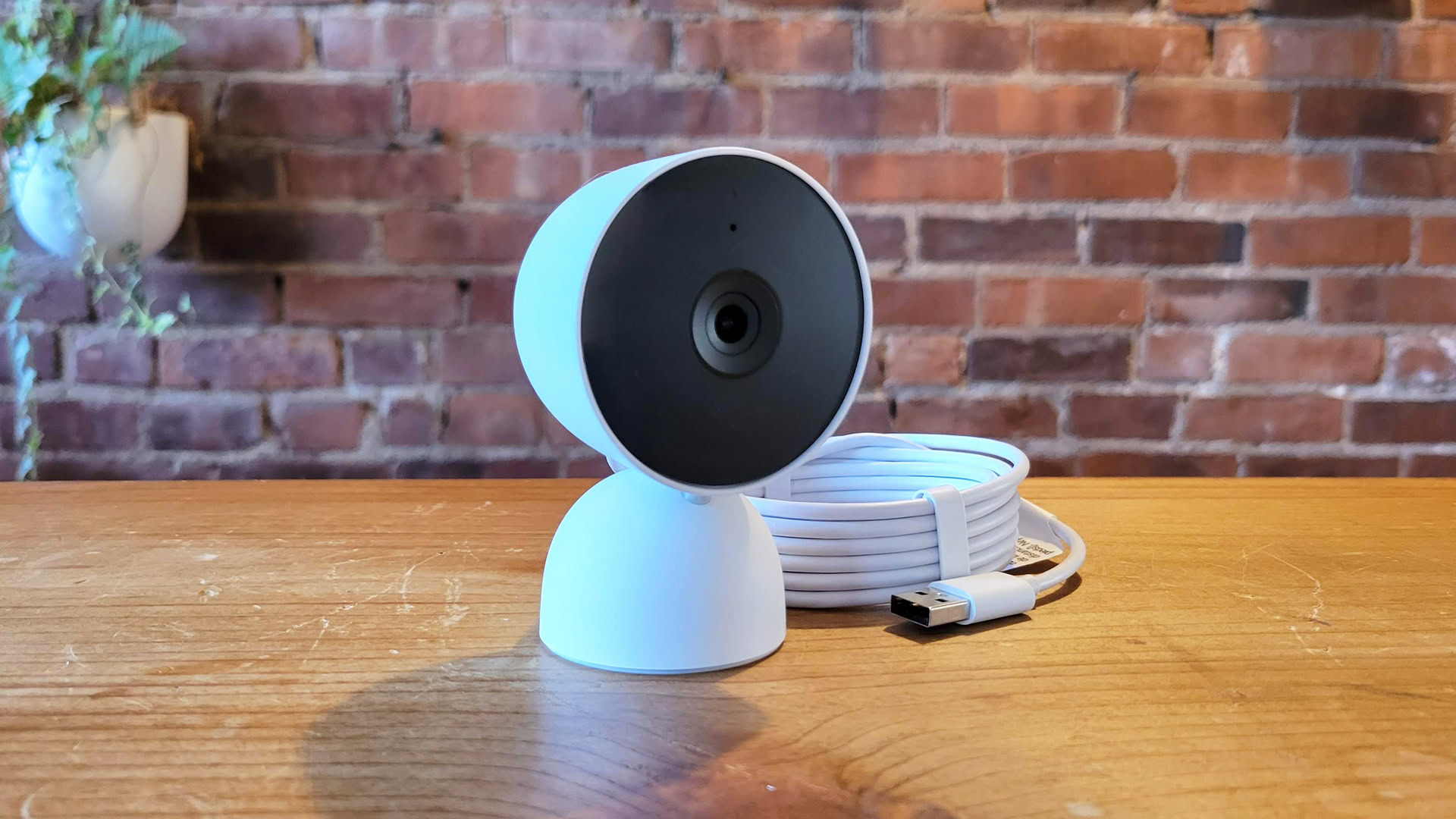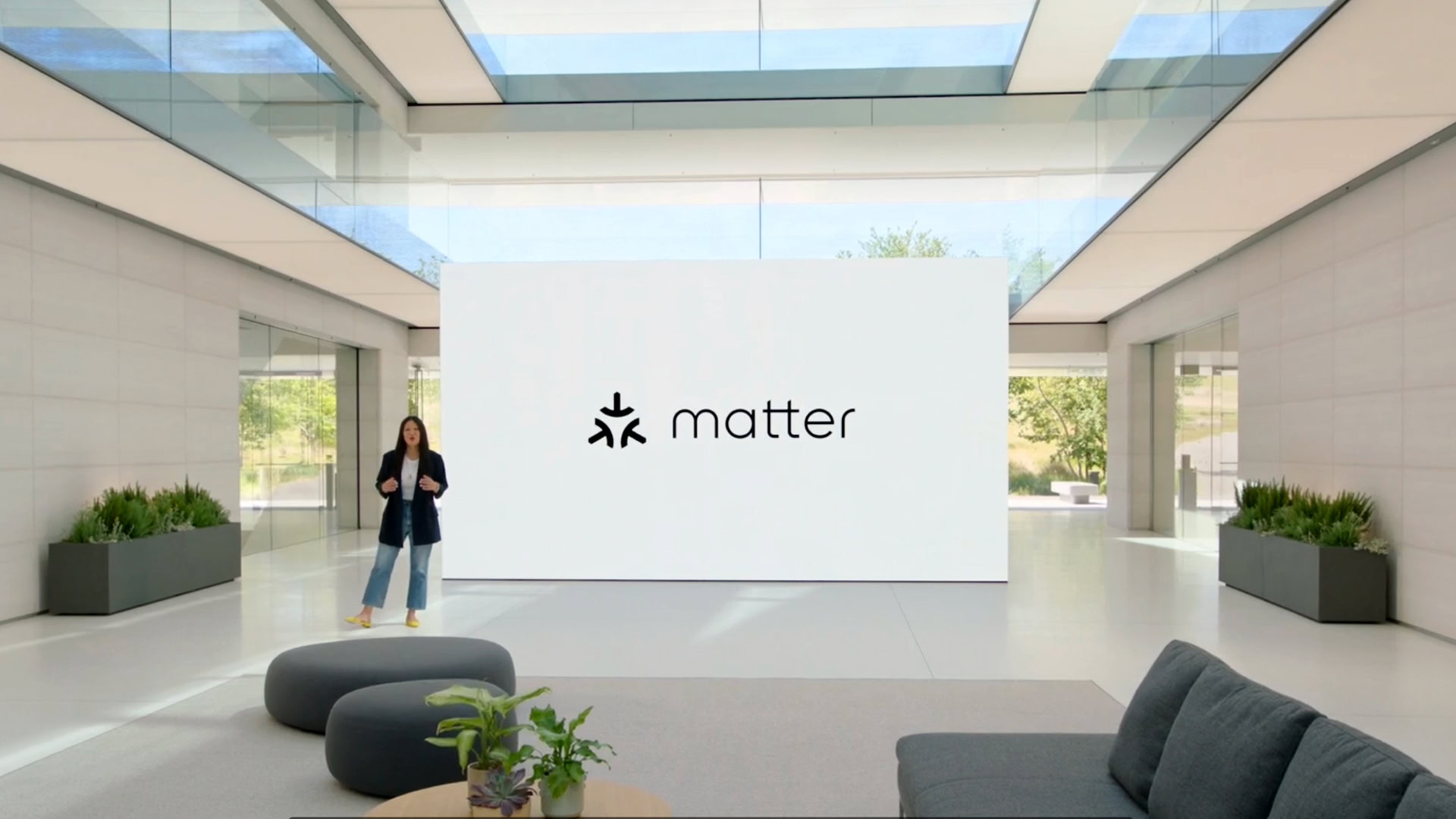Affiliate links on Android Authority may earn us a commission. Learn more.
Matter won't matter for a while, but don't let that crush your smart home dreams

This week, Google announced that Matter was rolling out to several of its speakers, smart displays, and routers. The smart home protocol, which has been in the works for several years, aims to unify different platforms like Google Home, Amazon Alexa, Apple HomeKit, Samsung SmartThings, and more under one roof, ensuring interoperability and easy setup. In short, Matter is the ultimate smart home dream, but the reality may be filled with disappointing limitations… for now.
Are you excited about Matter's launch?
What you’re getting with Matter today

The biggest difference you’ll notice today is easier setup and expanded interoperability for Matter-compatible devices.
Say you buy a new sensor or light or plug with Thread support and Matter compatibility, you’ll find that setup in the Google Home app, for example, is a lot easier than it was before. In many cases, you can scan a code (just like with Apple HomeKit) and the device shows up in the Google Home app in a few seconds. You don’t need to install the dedicated app from the device’s manufacturer, set your gadget there, then go through hoops to connect that app to your Google Home account. At least not for basic controls and capabilities — we’ll get back to this later.
The best demonstration I’ve seen of Matter’s benefits in action is this video from European smart lock company Nuki. The video shows off how easy it is to add the lock to Google Home by scanning the QR code, then how to add the same lock to Apple Home too via the Google Home app.
That’s quite cool, but what’s nicer is that companies that make smart home devices no longer need to (necessarily) manually code for support for each smart home ecosystem separately. They can make sure their devices are Matter-compatible and that’ll enable support in Google Home, Amazon Alexa, Apple HomeKit, Samsung SmartThings, and more, reducing development time and resources.
Easy and fast setup plus better interoperability are the most immediate Matter benefits.
As a user, you might not notice this very often because a lot of smart home gear currently supports multiple platforms without the help of Matter; after all, it doesn’t matter how the sausage is made as long as your smart light pops up in the app you use. But you will slowly reap the benefit of having more choices because brands that only supported one or two ecosystems will de-facto open up to more. A good example of this is Eve which is upgrading many of its Apple HomeKit-only devices to add Matter, thus allowing them to be managed and controlled by Google and Amazon too.
Some of Matter’s current limitations

Matter v1.0 officially launched a couple of months ago, but this first version of the protocol only delivers some of the promises we’ve been hearing for years. Some restrictions exist and those, in my opinion, are the biggest reason why Matter won’t be as impactful now to the regular user as it could potentially be in the future.
First, several smart home device categories aren’t supported in Matter v1.0, most notably security cameras and doorbells, robot vacuums, and household appliances. Don’t expect to get your Nest Cam or Roborock S7 MaxV vacuum instantly plugged into your Apple Home app for example, or your Samsung washing machine connected to Alexa without going through SmartThings first.
Matter lacks support for cameras, vacuums, and appliances. Smart plug and lock integrations (among others) are pretty limited too.
Second, some smart home product categories only offer some basic controls. Expect on/off abilities, some modes or scenes, and scheduling, but nothing too intricate. For instance, Matter doesn’t support energy monitoring from connected wall plugs. So if you get an Eve Energy plug, you won’t see its energy consumption in the Google Home app. You will, however, see those stats in the Apple Home app independently of Matter because a) Apple supports energy consumption for smart plugs through HomeKit and b) Eve has added that HomeKit capability to its Energy plug. Until Matter supports this natively, Google would have to add energy monitoring to its smart device documentation and Eve would have to implement that in order for it to show up in Google Home. That is unlikely to happen.
These limited capabilities mean you still need the dedicated app to do anything other than basic controls and settings. A smart lock can be opened and closed with Matter, but you can’t issue access codes for guests, change how many times a double-cylinder lock type rotates, or see a log of who opened/closed the door, among other restrictions. All of these require the lock’s dedicated app, so at least one person in the household will have to install that to properly manage it. This is true for several other device categories as well.
Because of Matter's limitations, you can't get rid of standalone apps and hubs just yet.
Hubs are here to stay for now, even with Matter and Thread. I could write an entire thesis about the technical limitations, business reasons, benefits to some users, and long-term issues of this strategy, but suffice it to say that Philips will make its Hue bridge Matter-compatible (thus bringing all the lights along with it), but it can’t bring Matter to individual lights. So you won’t be able to connect a Hue light directly to a Google Nest Mini without the bridge. The same thing will be true for any Z-Wave and Bluetooth satellite devices.
Most importantly, though, Matter’s cross-platform interoperability is still in its infancy. Rooms and groups created in the Google Home app aren’t likely to carry over to the Amazon Alexa app, for example. Schedules, routines, and automations neither. If you’re a mixed Android and iOS household, don’t expect routines and automations you create on one platform to show up on the other and be modifiable there. Some crazy messes could result from this for now, so you’re better off sticking with one ecosystem per house or at least keeping one platform as the “admin.”
Speaking of admins, Matter’s Multi-Admin experience isn’t live on some platforms yet, but we know Google and Samsung are working on bringing it in 2023. This will allow you to quickly import any Matter devices you’ve already set up with SmartThings into the Google Home app without having to rescan all the QR codes.
It’s a matter of time

Despite this big list of limitations in Matter v1.0, we’re cautiously optimistic about the protocol’s future. Things are overall looking good for Matter and the fact that the biggest tech companies in the world have pooled all of their efforts into this protocol certainly gives it more credibility and higher chances at success.
In the long run, I believe Matter’s most noticeable benefit will be the rise of Thread as the most popular smart home connectivity standard. In the last decade or two, the smart home has been all over the place with multiple ZigBee protocols, different Z-Wave frequencies, RTS, InfraRed, Bluetooth, Wi-Fi, and more. Because of Matter’s launch, Thread and Wi-Fi are likely to emerge victorious, with Thread taking over for smaller, power-friendly, or unplugged accessories.
Thread is likely to emerge victorious in the smart home connectivity wars. Expect less fragmentation and more robust smart home setups.
Not only will this reduce fragmentation in the smart home space, but it will also ensure your at-home setup is much more robust. Thanks to the mesh nature of Thread, any device you add will act as a node and strengthen your setup. Your garden lights won’t have to be within reach of your Nest Wifi Pro, for example, they just need to reach a motion sensor that can reach a wall plug that can reach the router at the other side of the house.
We’re already spotting the start of that Thread uptake trend. Eve, Aqara, Micron, and Netatmo are about to launch new Thread-compatible sensors, switches, plugs, and lights. And many more companies are likely to follow with new Thread devices or hubs. Other connectivity protocols may stick around for a few years, but they’ll likely become more niche than they already are. Speaking as someone who dabbled in Z-Wave sensors and plugs for a while, I’ll never consider those devices again. It’s Thread or nothing for me now.
Matter’s other benefits will also become much more clear with subsequent updates to the protocol. There’s a rosy future where more device categories are supported, plenty of settings and options are added for existing devices, and proper cross-platform synchronization is implemented. But that is a few years down the line.
Matter is cool but has a limited concrete impact now. It will be much more powerful in a few years.
For now, Matter is cool in theory but won’t have an immediate significant impact on many of us. If your smart home is already set up and you’re not looking to expand it with new devices and if you only plan to use one ecosystem for the foreseeable future, Matter won’t matter to you. But if you’re buying new smart home devices and actively trying to ensure your smart home is platform-agnostic, then you should definitely think of Matter if only for easy setup and future-proofing.
I’ve been holding off on getting some extra motion and open/close sensors until now, but I’ll finally splurge and grab some stuff from Eve. Thanks to Matter, I can do that now, despite having an Android and Google Home household.
Continue reading: Should I buy smart home devices now or wait for Matter?